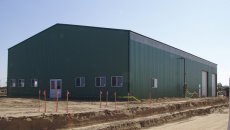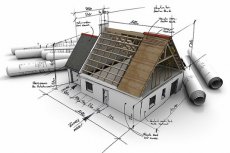Capital Construction Definition
 - The construction of any facilities that require not only construction and construction, but also land-based structures of the so-called deep-seated bases, as well as the construction of refrigerating and non-contracting structures, and the installation of all necessary engineering communications. The same capital is the construction of new and modernized old production and non-productive structures.
- The construction of any facilities that require not only construction and construction, but also land-based structures of the so-called deep-seated bases, as well as the construction of refrigerating and non-contracting structures, and the installation of all necessary engineering communications. The same capital is the construction of new and modernized old production and non-productive structures.
Capital construction: classification
Different buildings, structures and buildings are accepted for capital construction. Unfinished construction facilities are included in the same list if they were initially built as capital.
The term of the capital construction site appeared in the Russian Federation legislation only in 2005, changing the concepts of the construction site and the real estate facility in urban development. The capital construction site is designed to be subdivided into buildings and structures.
Buildings are designed to live, keep animals, store production products or house production itself. The building is a balanced engineering system and network that serves the ground and underground construction. Buildings are classified as:
- Housing;
- and the elderly.
 Housing houses or buildings represent several rooms intended for accommodation with additional household accommodation. An example of residential buildings is dormitories, boarding schools, children ' s homes and shelters. Special homes for older citizens, persons with disabilities and veterans are established under the same principle.
Housing houses or buildings represent several rooms intended for accommodation with additional household accommodation. An example of residential buildings is dormitories, boarding schools, children ' s homes and shelters. Special homes for older citizens, persons with disabilities and veterans are established under the same principle.
The individual housing is primarily different from the one family. This capital facility is located independently of other buildings and cannot have more than three floors. In the case of individual dwellings of a botttage type, land is also owned, the height of the building is limited to two floors.
A housing house created for two or more families with adequate housing legislation for apartments with separate exits belongs to apartment buildings.
The non-residential buildings are designed to preserve material values, create conditions for work and recreation, social or cultural development of the individual. Non-resident buildings include commercial, educational, industrial, administrative, agricultural and medical facilities.
Related posts:
 The owner does not always have the opportunity to build a house on his own accord. The establishment of housing units must be regulated by the authorities, which…
The owner does not always have the opportunity to build a house on his own accord. The establishment of housing units must be regulated by the authorities, which… The SVC, Stream Dom, provides all the services immediately, from the design of a house or a cottage project to the building of a house or the construction of a cottage…
The SVC, Stream Dom, provides all the services immediately, from the design of a house or a cottage project to the building of a house or the construction of a cottage… If you re going to build your own country house, you re sure you know that before any work is done, it s necessary to define the project. You can create a home project…
If you re going to build your own country house, you re sure you know that before any work is done, it s necessary to define the project. You can create a home project… Engineering networks and communication are used in each house. People need water, heat, sewerage, electricity for comfort. Engineering networks comprise three types…
Engineering networks and communication are used in each house. People need water, heat, sewerage, electricity for comfort. Engineering networks comprise three types… For more than 11 years, we have been building wooden houses from the Brew in Ekaterinburg and guaranteeing an optimal price-quality ratio: we are building houses…
For more than 11 years, we have been building wooden houses from the Brew in Ekaterinburg and guaranteeing an optimal price-quality ratio: we are building houses… In the modern construction market, houses and new technology facilities in the construction of Genesis have been built for a year. The foundation of the buildings…
In the modern construction market, houses and new technology facilities in the construction of Genesis have been built for a year. The foundation of the buildings… Mode to wooden houses will never leave, as it is the most environmentally sound material, and the construction of wood houses is much cheaper than bricks. For this…
Mode to wooden houses will never leave, as it is the most environmentally sound material, and the construction of wood houses is much cheaper than bricks. For this… The Order of the General and Political Department of the Far North of the NKVD of the USSR for the development of the polygraphic base and the streamlining of the…
The Order of the General and Political Department of the Far North of the NKVD of the USSR for the development of the polygraphic base and the streamlining of the… Our company, LSTCroyGrup, is offering you ready projects based on the LSTC carcas. If you are not prepared to develop and develop a fully future development on your…
Our company, LSTCroyGrup, is offering you ready projects based on the LSTC carcas. If you are not prepared to develop and develop a fully future development on your… The Lad House has been building carcass houses in Irkutsk for over five years. As we use an integrated approach in construction, we are able to significantly reduce…
The Lad House has been building carcass houses in Irkutsk for over five years. As we use an integrated approach in construction, we are able to significantly reduce…